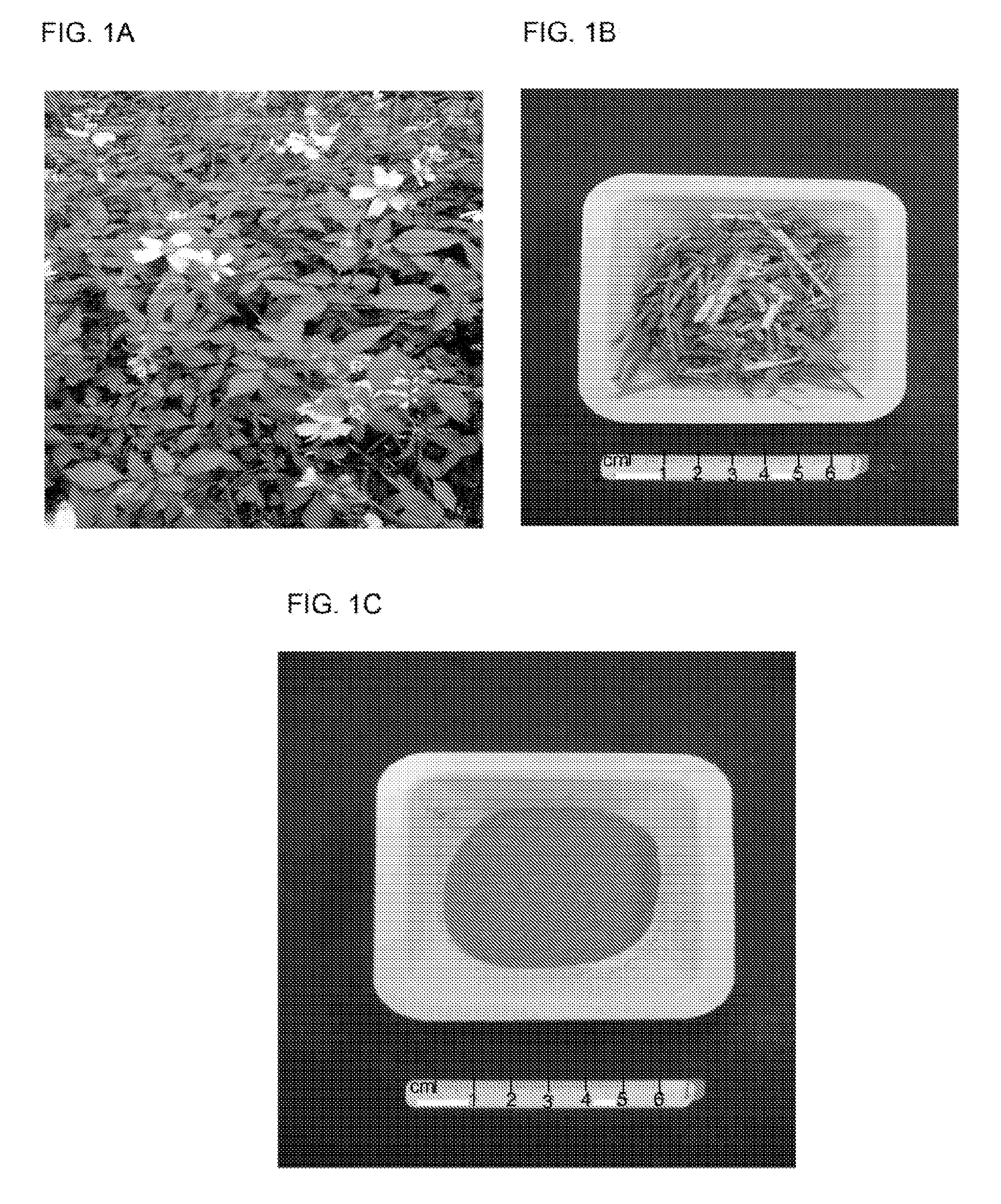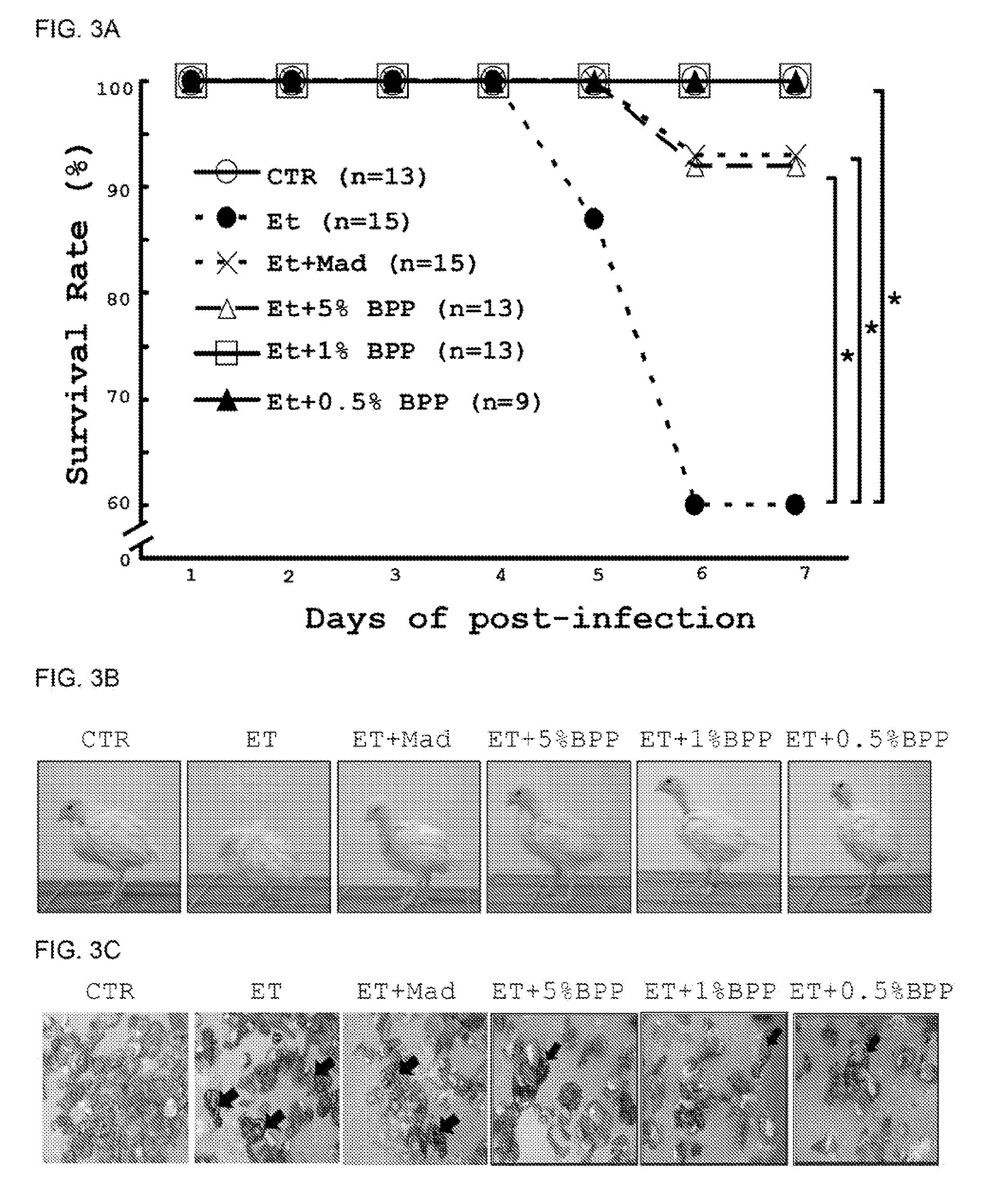Bidens pilosa and polyacetylenic compounds for prevention and treatment of coccidiosis
a technology of coccidiosis and polyacetylenic compounds, which is applied in the field of coccidiosis prevention, inhibition and treatment, and can solve the problems of inefficient feed utilization, coccidiosis loss, and significant economic loss in the poultry industry
- Summary
- Abstract
- Description
- Claims
- Application Information
AI Technical Summary
Benefits of technology
Problems solved by technology
Method used
Image
Examples
example 1
Materials and Methods
Chemicals
[0137]Maduramicin, PBS, hematoxylin and eosin Y were purchased from Sigma-Aldrich (St Louis, Mo., USA). B. pilosa L, was shade dried and ground into powder. The powder was mixed with chicken diet as indicated. To evaluate the quality control of each batch of B. pilosa powder. HPLC was performed.
Birds, Diets, and Experimental Design
[0138]One-d-old Lohmann broiler chicks hatched. at Taichung Hatchery (Taiwan) were wing-banded upon arrival, weighed, and randomly placed in Petersime starter brooder units. At 1 and 2 d post-hatch, the birds were given free access to water and diets. The diets were formulated by mixing the base diet (Chicken feed, Taiwan Sugar Corporation) with carrier alone (control diet) or the indicated dose of B. pilosa power (BPP diet). In case of cytopiloyne experiments, the animal was administered with 45 μg of isolated cytopiloyne each day. After grouping, birds were tube-fed with Eimeria oocysts. Growth performance (body weight and f...
example 2
[0152]FIG. 4. shows the effect of cytopiloyne on the sick bird appearance and clinical symptoms in the chickens. One-day-old chickens were fed with control diet for 14 days. On day 14, the birds were infected with vehicle (CTR) or E. tenella (ET) and fed with control diet (CTR and ET groups) and the diet containing 45 μg / kg cytopiloyne (ET+CP) for additional 7 days. The sick bird appearance (FIG. 4A), blood stool (FIG. 4B) and cecal pathology in low magnification power (FIG. 4C) and (FIG. 4D) in high magnification power were measured.
[0153]FIG. 5 shows the Effect of cytopiloyne on mucosal pathology in the chickens. Ceca of the same chickens from FIG. 4 were fixed with 10% formalin and embedded with parafin. (FIG. 5A). The sections were stained with hematoxylin and eosin Y. (FIGS. 5B-C). The images of cecal slides were photographed and mucosal severity (FIG. 5B) and inflammation (FIG. 5C) were determined. FIG. 5D shows the chemical structure of cytopiloyne.
example 3
[0154]For prevention, inhibition and / or treatment of coccidiosis, animals are administered a composition comprising an effective amount of Bidens pilosa, an active constituent thereof, or an active compound isolated therefrom, Bidens pilosa, an active constituent thereof, or an active compound isolated therefrom may be added to the animal feed. The active constituent or active compound of Bidens pilosa may be extracted from the plant Bidens pilosa.
[0155]Bidens pilosa powder, an active constituent thereof, or an active compound isolated therefrom may be prepared in a form of a capsule. The composition may be prepared in a suppository dosage form. A pharmaceutically acceptable carrier may be added for preparing suitable dosage forms.
[0156]Bidens pilosa comprises at least the following polyacetylenic compounds A, A′, B, B′, C and C′:
PUM
 Login to View More
Login to View More Abstract
Description
Claims
Application Information
 Login to View More
Login to View More - R&D
- Intellectual Property
- Life Sciences
- Materials
- Tech Scout
- Unparalleled Data Quality
- Higher Quality Content
- 60% Fewer Hallucinations
Browse by: Latest US Patents, China's latest patents, Technical Efficacy Thesaurus, Application Domain, Technology Topic, Popular Technical Reports.
© 2025 PatSnap. All rights reserved.Legal|Privacy policy|Modern Slavery Act Transparency Statement|Sitemap|About US| Contact US: help@patsnap.com



